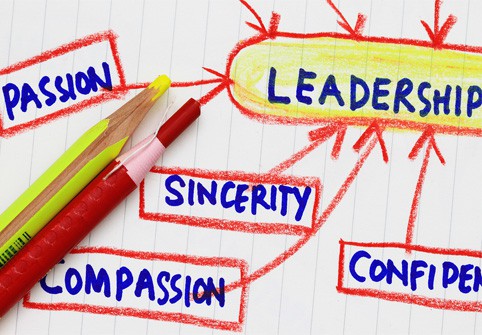10 Principles of Sustainable EdTech Implementation

There is a fundamental difference between schools that use technology effectively and those that use it as decor. Leadership. Even the best intentions of a tech-savvy teacher aren’t enough to change the cultural tapestry of an entire school or district. For substantive change to occur, those in positions of leadership must articulate a clear vision of technology use and shed some deep rooted beliefs and opinions that have shaped education for centuries. And once they do, they must take the lead in initiating change by adhering to the ten principles of effective integration of educational technology as outlined by the National Association of Secondary School Principals.
1. Principals must effectively and consistently model the use of the same technology tools they expect teachers to use in their classroom with the students. How can a leader expect her staff to use technology that she is not leveraging for her own work on a daily basis? Modelling effective technology use as a principal can inspire your teachers to do the same with their students. It’s all about commitment.
2. Principals must be consistent in their decisions and expectations about integrating learning technology in the school. When initiatives are adopted and decisions are made, school leaders must stick to them with strategic consistency. Doing so communicates your expectations about using technology and allows teachers to respond appropriately.
3. The principal’s communication about the pace and process of integrating learning technology needs to be clear and reasonable. Sit your staff down and lay out your expectations for implementing learning technology in an established timeframe. Reassure teachers that the digital tools that your school is adopting are intended to enhance instructional practices, not replace it. Be sure to articulate the rate by which school staff are to integrate technology. And help teachers understand that they will be largely in control of how that technology is used in their classrooms individually.
4. The principal must provide appropriate professional development time and resources to support effective classroom implementation of technology. Anything less communicates a half-hearted commitment to your technology initiative. Give requests for professional development opportunities aligned with technology use high enough priority to ensure that none of your staff is left unprepared. Utilize prep time and staff meetings for continued development and support. And relieve teachers from out-of-classroom, non-academic responsibilities so that they have the time to continually improve their implementation.
5. The principal must support early adopters and risk takers. This kinetic energy is the driving force behind any successful technology implementation. Allow these teachers to share their ideas in group settings, and encourage them to work together as much as possible. The plight of risk takers is often feeling isolated or alone. Ensure that they don’t by showing them that they aren’t.
6. The principal must do whatever it takes to ensure that all staff has early access to the very same digital tools that students will be using in their classrooms. Introducing a new technology a week before the new school year starts and expecting teachers to use it effectively is a recipe for disaster and aversion to future attempts at implementation. Give teachers several months to master technology tools before implementing them with students.
7. As the education leader, the principal must make it crystal clear to the technology leader that all decisions relating to learning technology will be made by the educational leaders with input from the technology leaders. Not the other way around. In other words, if you unlock it, they will come. Giving teachers access to technology and then limiting its use because of safety concerns will inevitably result in little real value being seen in technology. Acknowledge the need for reasonable safeguards while empowering your teachers with 21st century instructional tools.
8. The principal must set and support the expectation that student work will be done and stored using technology. Assignment baskets don’t create relevancy. And establishing the expectation that student work be stored and published using technology emphasizes the permanence of technology as an effective learning tool.
9. Principals must ensure that families and the public are kept informed about the school’s goals and progress relating to its use of technology as a learning resource. These stakeholders can either be your biggest advocates or loudest detractors regarding technology implementation. Include them in the continual discussion of your school’s goals and progress to successfully leverage technology for student learning and achievement.
10. The principal must be an active and public champion for all students, staff members, and the school in moving the vision of fully integrating learning technology for the second decade of the 21st century. Put candidly, show off the work that the members of your school community are doing with technology as a learning tool until there is nothing left to show. Continually make people aware of how effective technology implementation is benefitting your students and staff. Spotlight how it complements rather than relieves learners from engaging in rigorous and engaging work. And open up your school to those interested in seeing how technology-based learning takes place.
Digital leadership is about taking advantage of the opportunities for learning that technology represents. Regardless of what kind of technology is available to you, the Digital Age that we teach and learn in requires principals and teachers to stop asking why they should be using technology in the classroom and start asking how they can maximize the tools they have available to them to enhance student achievement. It’s no longer about maintaining the status quo. Instead, principals and educational leaders need to ask themselves, What am I willing to do to improve all facets of my school?





John L
Good post, Dave. I'm curious about your use of the word "decorum" in the first sentence - what do you mean by that? Do you mean decoration?
Dave Guymon
John,
First of all, thank you for reading my post. It is a pleasure to share my learning with others. Second, thank you for spotting my error. To be quite honest, I mistook "decorum" for having the same meaning as "decor." I really appreciate you correcting me (and teaching me) while also being very cordial about pointing out my mistake. It was well received and has since been corrected.
Kyle
Hi Dave,
I found this article very interesting and relevant as I am working on building sustainable and scaleable ed tech programs within my setting.
I too believe that successful use of these program heavily relies on support from the top down and support of all stakeholders involved.
What kind of indicators are you looking for recognizing when there is successful implementation?
You've made a very clear outline for those that are beginning to implement educational technology but I am also curious on your thoughts about how to maintain sustainable program/usage once everything takes off.